I played 60 hours of The Witcher 3 earlier this year, and only stopped because I had other games to play. One question always nagged me, though: how did CD Projekt RED put together a sprawling open world game that avoided the genre’s usual preference for meaningless side quests? I called them to find out.
The first article I wrote for Kotaku was bellyaching over the mindless fluff in Dragon Age: Inquisition. The game’s sweeping landscapes were lovely to walk around, but too often, what you did in them was boring as hell. I felt the exact opposite with The Witcher 3; the vast majority of the game’s side content filled in satisfying pieces of lore or told their own tiny but interesting stories.
“We didn’t want the player to think that we don’t respect his or her time,” said senior writer Kuba Szamałek. “We didn’t want quests to feel meaningless or they were a chore to do. We didn’t want people to think ‘oh, god, I have to do this side quest.’”
There are, quite literally, hundreds of quests available in The Witcher 3. As you gather more and more while exploring the countryside, it can become daunting to figure out where to even begin. But what constantly surprised me about The Witcher 3 is how often I wanted to keep exploring the side quests, rather than plow through the main story and move onto the next game.
Though I picked on Dragon Age: Inquisition earlier, it’s hardly the only offender. Open world games are notorious for stuffing their big worlds with boring side content. It’s almost seemed inherent to making an open world game.
CD Projekt RED tried to avoid this by flipping their design process around.
“For the most part, the quest content dictated the size of the world, not the other way around,” said level designer Miles Tost. “We didn’t just start with a huge world and go well, let’s see how we can fill this one up.’ This probably helped us to not end up with a world that feels artificially bloated just for the sake of size.”
“The quest team would look at it [the world] and think how many quests we should prepare to provide enough entertaining content to fill these levels,” said Szamałek. “Sometimes, we’d have to adjust a certain part of the world that felt too big or too small and react accordingly.”
Some games, like The Elder Scrolls V: Skyrim, have experimented with systems that craft infinite quests for the player, even when the story is over. For a while, CD Projekt RED played around with their take on this for the game’s monster contracts, in which Geralt travels to various towns to fight unique creatures.
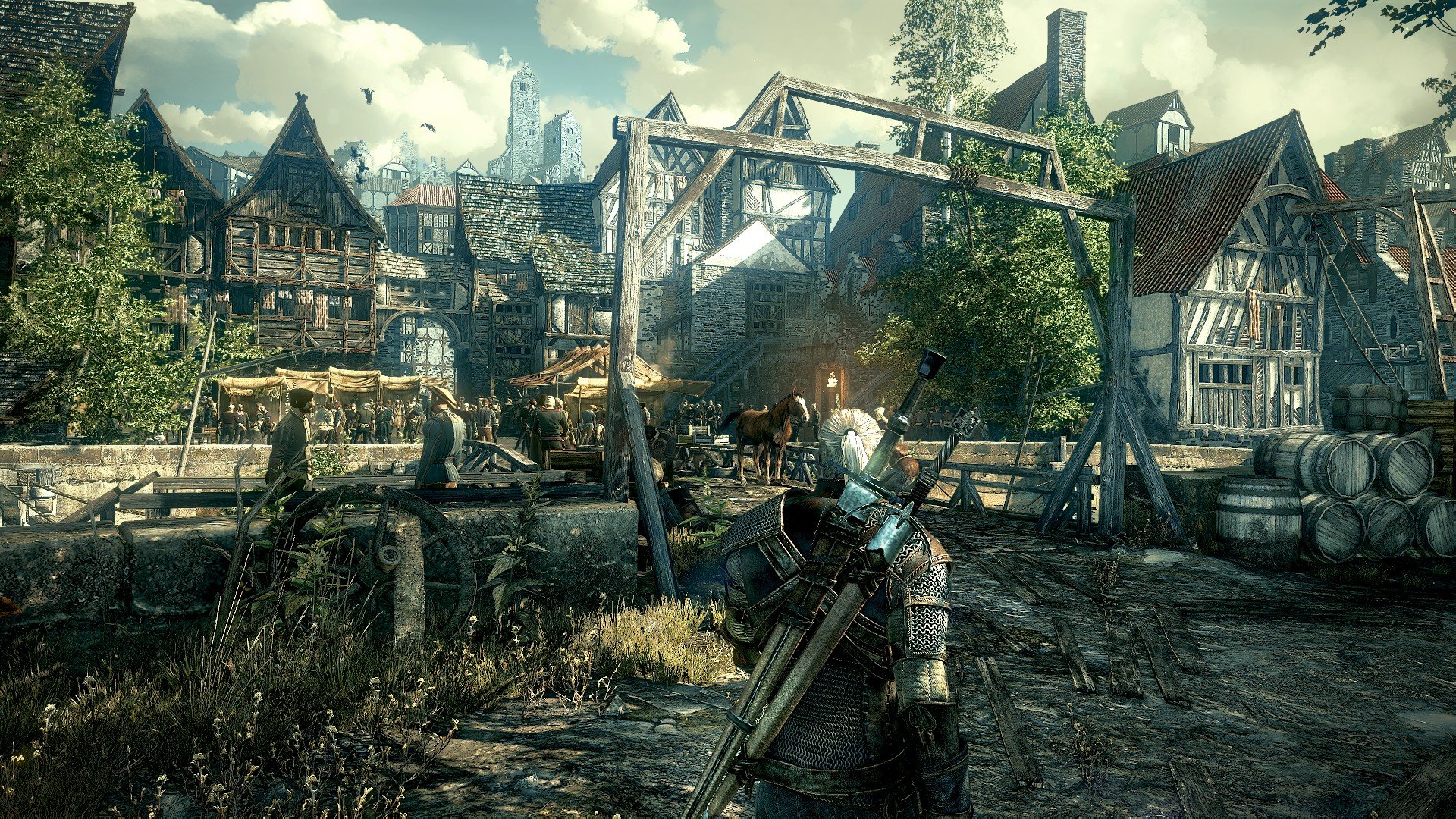
“The outcome was very unsatisfying,” he said. “We saw that difference and the contrast [between] what we did by hand and what we tried to generate. It was so big that we simply could not do it.”
Instead, they went back to the drawing board, and came up with a way to write and develop monster contracts on their own without overwhelming the team.
Nothing in the game is procedurally generated, in fact.
“Everything that is made in a level was hand-crafted.,” said Tost. “Some person has worked on placing that tree or that rock or that house. There’s nothing that we just press a button for and, suddenly, it’s there. That allowed us to add a lot of great detail and also love to some places. Some people would take parentship of some locations and build and go so far as to add some easter eggs. I certainly have some locations that have things that only friends of mine would understand. ‘Oh, this is something that Miles did!’”
The process for pitching open world quests was a give-and-take between writers, designers, artists, and everyone else involved in making the game. In most cases, the stories littering the open world were first conceived by trying to reuse assets already made for the game, rather than coming up with new stuff.
The rule, said Szamałek, was to not write more than 15 lines of dialogue.
“We’d go over the limit not once or twice but three times,” he laughed. “Then, we had to fight to convince people that it’s the extra effort and extra money to add all these lines because it adds so much to the quality of the quest.”
The earlier in development, the easier it was to argue for making something more ambitious. One of the game’s most memorable side quests, in which players investigate a wizard studying cheeses, wasn’t meant to be more than a small room. The concept was thrown around as the studio was winding down on a Friday night, but the team got behind the quirky idea, so it kept growing.
“One of the things I really like about CD Projekt is that we have a flat hierarchy,” said Szamałek, “and people of all sorts of backgrounds in a company can come up with crazy ideas. If they gain traction, they go in the game.”
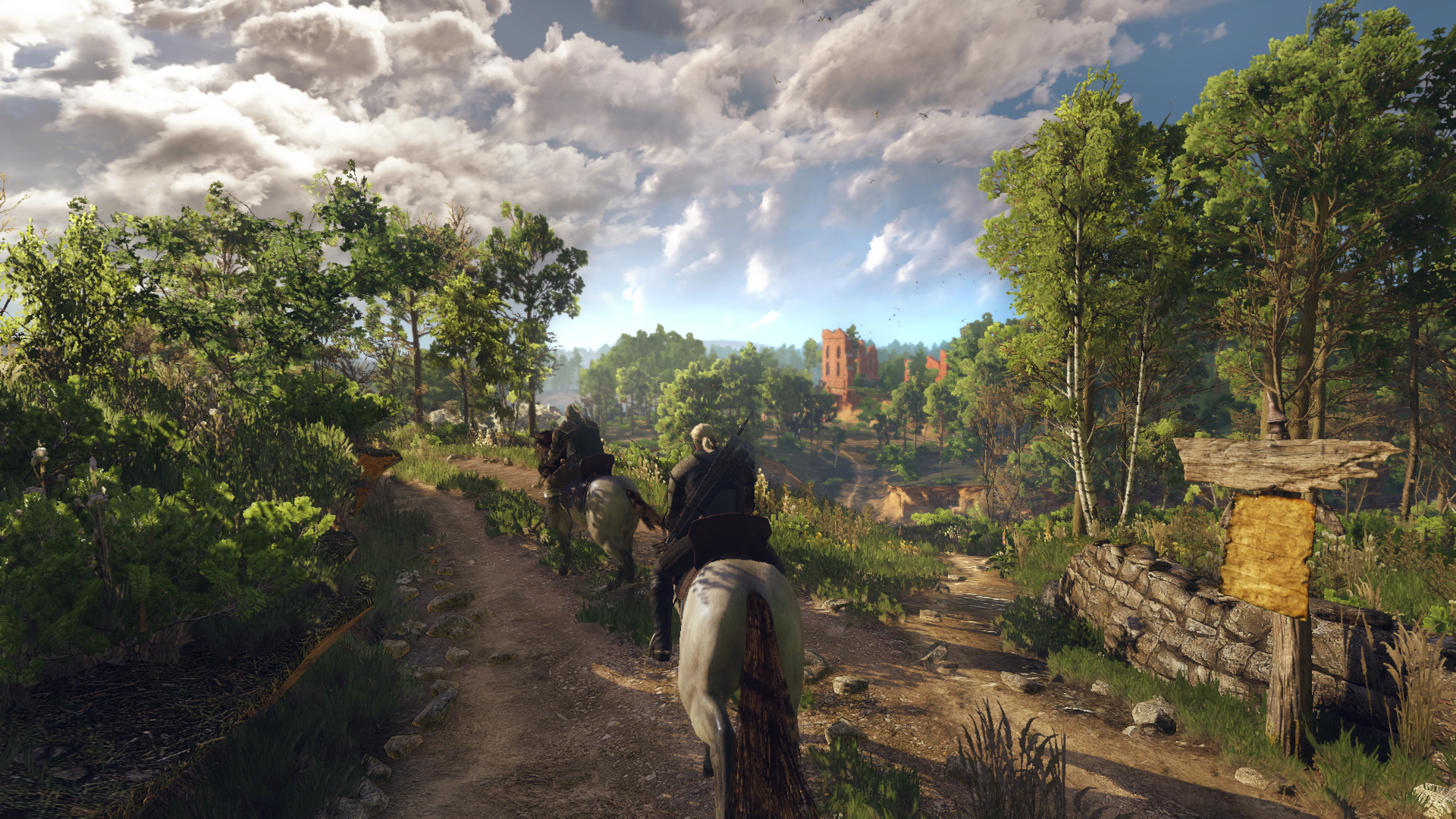
As the game moves closer and closer to completion, however, things get hairy. The game’s writing, for example, has to be finished roughly six months before the game ships, since there’s so much production involved with recording the dialogue, implementing it into the game, and making sure it all syncs nicely.
“At the stage,” said Szamałek, “not all the systems are implemented, the code is not necessarily super stable, and so on. We have to finish working on the game’s plot before the game is actually working smoothly. By the time it is and everyone can test it, it’s too late to make any major changes. You have to think about what the game is going to look like at the end. There’s a lot of guesswork.”
This was especially true for the side quests. In one quest, it changed enough that the dialogue no longer made any sense. It was too late to record anything new, however, so a last-ditch effort was made to copy and paste pieces of dialogue from four other quests in the game and hope that nobody would notice.
“As far as I know, nobody even realised that,” said Szamałek.
(Kotaku readers, can we solve the mystery?)
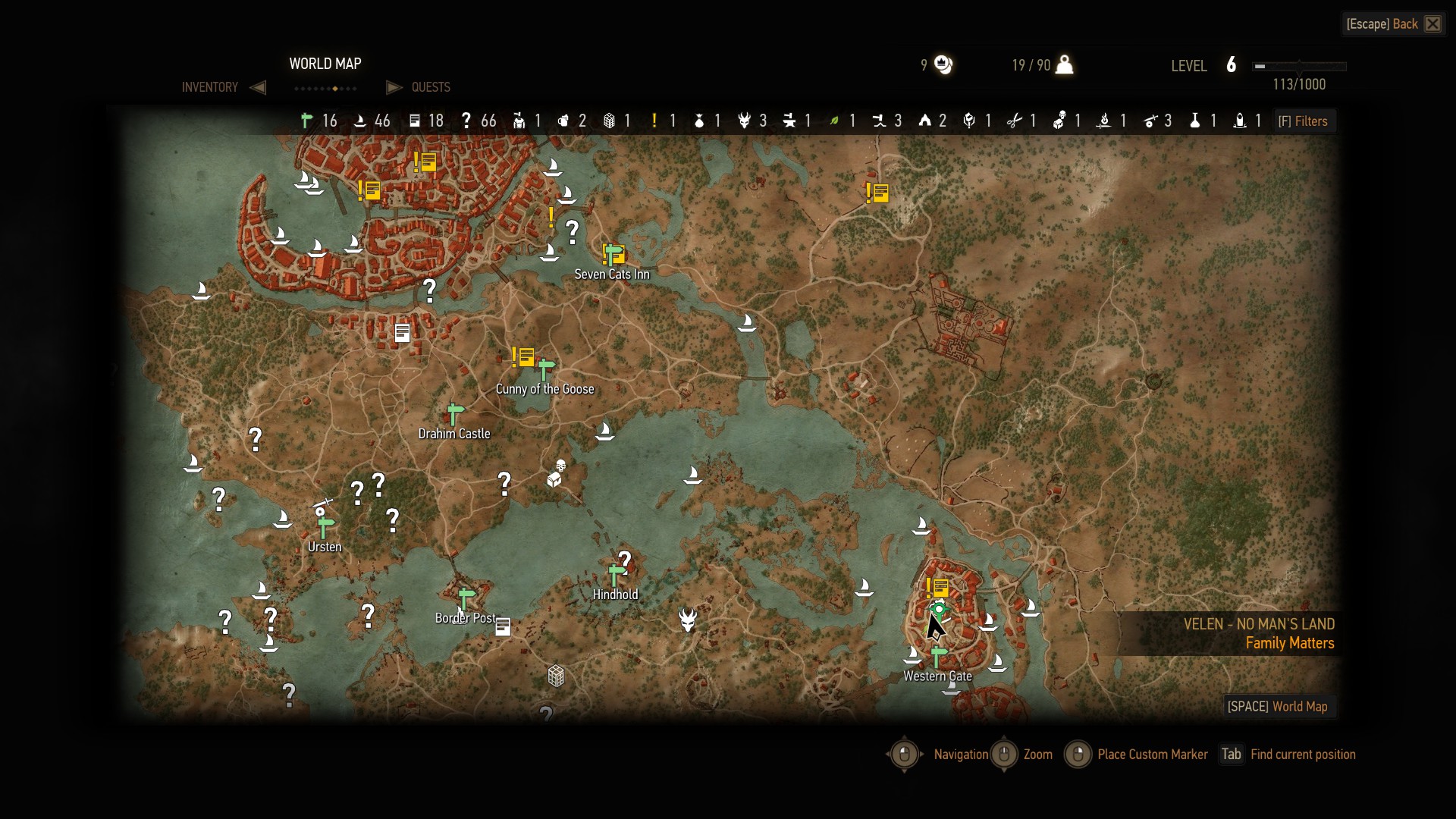
The level designers have things a little easier, with deadlines closer to the game’s release date. But that doesn’t mean there aren’t hiccups along the way. As the team prepared an E3 demo a few years back, it became clear the way Geralt climbed around the world didn’t work. They wanted to encourage players to go wherever they want, but to make the E3 demo work, the developers had to modify every single object in the world and flag it as something Geralt could or couldn’t climb. The team wouldn’t have time to do this for the entire game.
Instead, they came up with a new system that let him climb anywhere, but this required completely rethinking the game’s level design.
“Some quests are actually dependent on being played in a certain order,” said Tost. “You are not supposed to leave a certain section or else the quest will break. Suddenly, all these quests were essentially broken, since Geralt, instead of being able to climb a very limited amount of objects, could climb all the objects in the game. [laughs] […] Our own ambition caused this small hazard in development where everyone went ‘oh, god, we need to change everything so drastically.’ [laughs] But, ultimately, it turned out for the better.”
CD Projekt RED discovered one unfortunate side effect while playtesters were working through an early version of the game. In this sequence, Ciri is recovering from an injury she’s sustained in battle.
“Ciri is wearing her underwear and bandage and that’s it,” said Szamałek. “They managed to jump across the fence and they started roaming Skellige as a half-naked Ciri. This is a big sign that there was further work to be done. [laughs] This happens sometimes.”
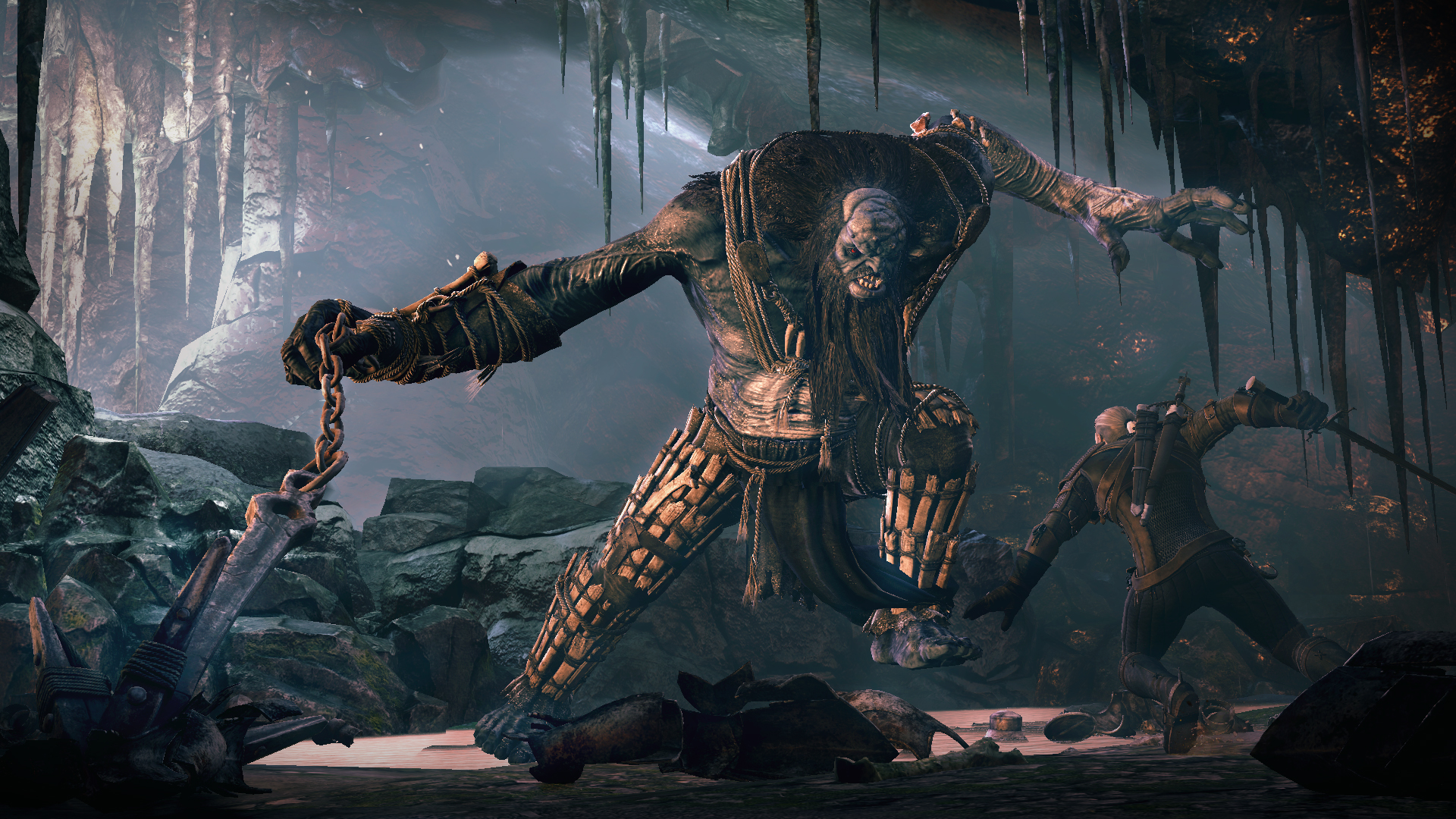
The massive critical and commercial acclaim for The Witcher 3, however, seems to suggest the studio’s attention to detail has paid off. This obsession covered every aspect of the game, including what material made up the walls of Novigard, one of the main cities. The team spent a whole meeting researching what would be appropriate for their world; to them, having a world full of monsters didn’t give CD Projekt RED a licence to throw all logic out the window.
“It’s not something players notice on a conscious level,” said Szamałek, “unless they’re PhD students in medieval architecture. [laughs] I think it all comes together to create this illusion of a real place you can immerse yourself in.”
Mission accomplished, I’d say.
“We wanted to make everything by hand and make sure everything is unique,” said Tost, “to keep up the player’s sense of excitement while exploring the world and a sense of wonder. Even if you see something familiar on the horizon, it should still be worth exploring. You should be able to find something interesting.”
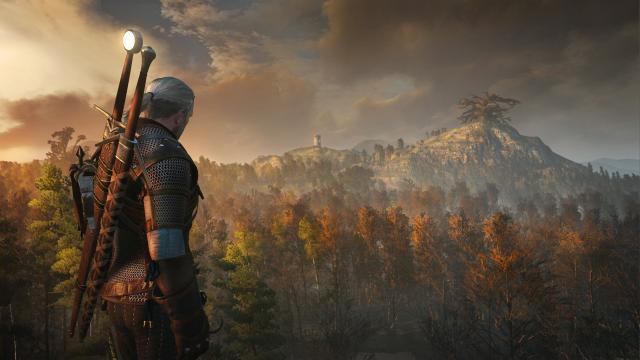
Comments
17 responses to “How The Witcher 3’s Developers Ensured Their Open World Didn’t Suck”
After playing MGSV for awhile now and returning to the Witcher, I embarrassingly forgot how alive the Witcher world felt. I even had to park my horse at one point and just watch the trees sway during a windy thunderstorm.
I’ve heard MGSV is repetitive as hell and the story is really not engaging. Is this really true or are they just butthurt MGS fans?
All of the above. However… there is a fun repetition about it. Gameplay is more than solid. But compared to previous ones, you won’t lose any sleep if you didn’t play it. I almost think it isn’t a metal gear at all. Just a brilliant sandbox tactical espionage game. I also don’t use Snake. I play as my other mother base members which makes it even less metal gear like. Still a great game though in it’s own un-metalgear like way. 🙂
Thanks for the unbiased perspective mate 🙂
I have to admit its the best OWG i have eva played.
I’m wierded out by the tone of finality and certainty over a measure of subjective experiences in this article. I happened to enjoy Witcher 3’s open world far more than Inquisition for the same reasons but my partner literally felt the opposite for a host of different reasons, they are very different approaches and one has been used by hugely popular games over the years that haven’t all been described as “boring”. Just curious, do people who had a different subjective experience just not read the article after being dismissed in the first minute, leaving no vested interest in the topic? I’m just trying to understand what this is, today, this wierd tone that almost positions everything within a writers’ interests as perfectly objective. I get that people make excuses a lot today and many rely on altering the definitions of words and writing conventions in order to function, i’m simply curious why this tone of finality and certainty over subjective experiences is such a common convention of modern writing, far more prevelant than it has been before.
It’s not new, it’s op-ed vs true journalism. It’s clear that this is an op-ed feature using the first person and quite typical of blogging.
I loved every day/hour/minute/second I played of TW3. Can’t wait til the first expansion drops. Ever game I’ve played has felt so hollow since finishing the game a few months ago.
This article has just convinced me to finish the game.. even after 70+ hours game play.
man i’m 165 hours in and still haven’t finished. I just keep finding things to see and do. So many quests! :O Loviing it though
It’s a shame a game which is supposed to be so good has an awful (IMO) combat system. I cannot stand and absolutely hate the way it plays out. I prefer hack and slash over this style with multiple stances and the like. I bought the Witcher 1 on release on PC, I returned it to the store the same day. A shame I’ll miss out on all the awesomeness of 3.
Not sure if you’ve had hands on with 3?
It’s still has roots in the original combat system, but since 2 has been a lot more real time actiony compared to 1.
If you haven’t even tried 3 and are assuming combat is identical to 1, give it a try first.
If you have played it, then fair enough, it’s no full on hack-n-slash; each to their own.
I have never physically tried it no. I guess my criticism is based on the first one and from watching gameplay footage. I don’t plan to buy it to test it out myself, so I guess I’ll have to wait for someone to get it for me to try it. One thing that I really don’t like either is auto attack style combat similar to WoW or Neverwinter Nights, where you click and it goes through an attack combo or keeps attacking. I want to click once to attack once similar to Skyrim or Diablo. If it is not auto attack, then I may like it. But hey, I can’t really 100% criticise till I try it myself.
Combat in the Witcher 3 is nothing at all like what you just described. It’s much more akin to Dark Souls; that is to say, it’s a very deliberate 3rd person action style combat.
In that case, I HIGHLY recommend you give the Witcher 3 a go, I think you will be pleasantly surprised.
If your on console, just buy the game from EBGames, if you no like, return within 7 days – risk free.
What a goddamm beautiful game
Everything I hear about their process and values impresses me so much. They seem like a really top team. Looking forward to Cyberpunk!